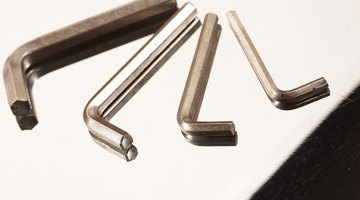How to Install a New Load Center or Breaker Box
The load center in a home is the place where any circuit in the house can be turned off. Without the load center to distribute the power to the various circuits, it would be necessary to turn off all of the electricity in the entire house to work on any electrical project.

The load center is often called the breaker box or panel. Some localities require that these boxes be installed by licensed electricians. If you decide to tackle it yourself, make sure that you are familiar with all of the parts of the box before beginning the installation.
Things You Will Need
- Load center
- 240-volt breakers
- 120-volt breakers
- Screwdriver
- Cordless electric screwdriver
- Allen wrench
- Wire stripper
-
Locate the electric meter and make sure that the power is off before starting to install the load center. The breaker box can be installed before the electric meter is in place. However, it is necessary to know where the meter will be located so that the wires from the meter can be put in place when the load center is wired.
-
Remove the face plate from the load center by using a screwdriver to extract the screws holding the face plate to the box. Slide the box between the two studs where it will be located. The bottom of the box should be about four feet above the floor. Using screws and a cordless electric screwdriver, attach the box on each side to the studs. Depending on the location of the incoming wire from the meter box, slide the electric cables into either the top or bottom of the box through the large port in the middle of the edge of the box.
-
Use wire strippers to cut away about an inch of the coating from the ends of the three wires. The two black cables will be fastened under the lugs above the main breaker. Use a large sized Allen wrench to tighten the lugs onto the wires. The white wire will be similarly attached to the ground bar near the main breaker. In some installations, all three wires will be black. Make sure to identify which wire is the ground by tracking it from the meter box before making these connections.
-
Thread the wires from the various circuits one at a time into the load center. Each wire should be installed with its respective breaker and identified on the circuit list on the door of the box before wiring the next circuit. 120-volt circuits will have three wires coming into the box, and most 240-volt circuits will have four wires.
-
Attach the black wire from a 120-volt circuit to a 120-volt breaker by pushing the end of it into the notch under the screw and tightening the screw onto the wire. For 240-volt circuits, there will be two wires to attach to the breaker. These may be two black wires, or a black and red wire. When the wires are connected to the breakers, clip the breakers to the power bus. All of the white, green, and bare wires from either type of circuit will be inserted under the screws on the ground bar and secured by tightening the screws.
-
Replace the face plate onto the load center and install the screws to secure it. Mark the main breaker not to be turned on until all outlets, switches, and fixtures have been installed. If the meter box is in place, power can be turned on at the meter whenever it is desired after the main breaker has been wired.
Warning
Never install a load center without turning off the power at the electric meter first.
The Drip Cap
- The load center in a home is the place where any circuit in the house can be turned off.
- Some localities require that these boxes be installed by licensed electricians.
- However, it is necessary to know where the meter will be located so that the wires from the meter can be put in place when the load center is wired.
- The bottom of the box should be about four feet above the floor.
- The two black cables will be fastened under the lugs above the main breaker.
- 120-volt circuits will have three wires coming into the box, and most 240-volt circuits will have four wires.
- All of the white, green, and bare wires from either type of circuit will be inserted under the screws on the ground bar and secured by tightening the screws.
References
Writer Bio
Allen Teal was first published in 2002 in the "Adult Teacher" and "Adult Student" books for the Assemblies of God Sunday School department. He has also been published on various websites. He received an Associate of Arts in business from Mineral Area College in Park Hills, Mo.
Photo Credits
- hex nut wrench image by AGphotographer from Fotolia.com
- hex nut wrench image by AGphotographer from Fotolia.com
More Articles



